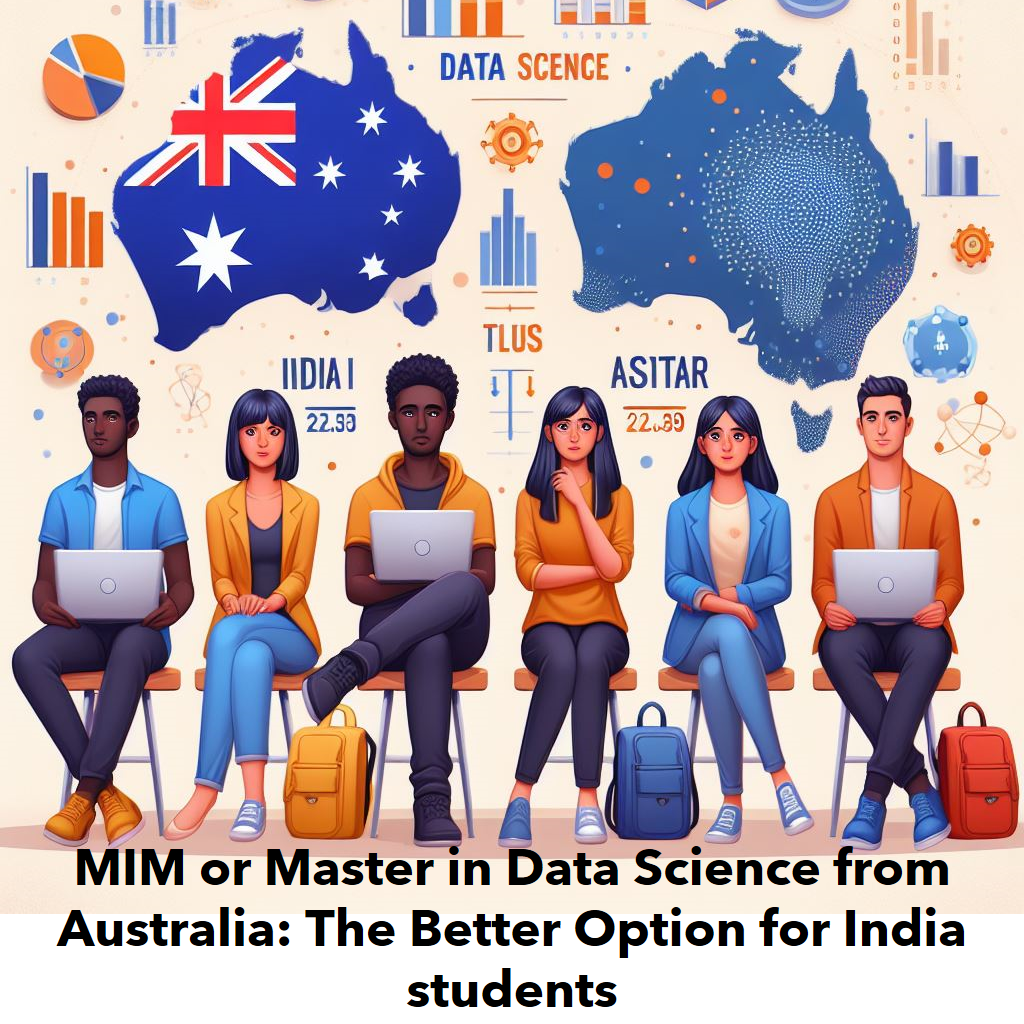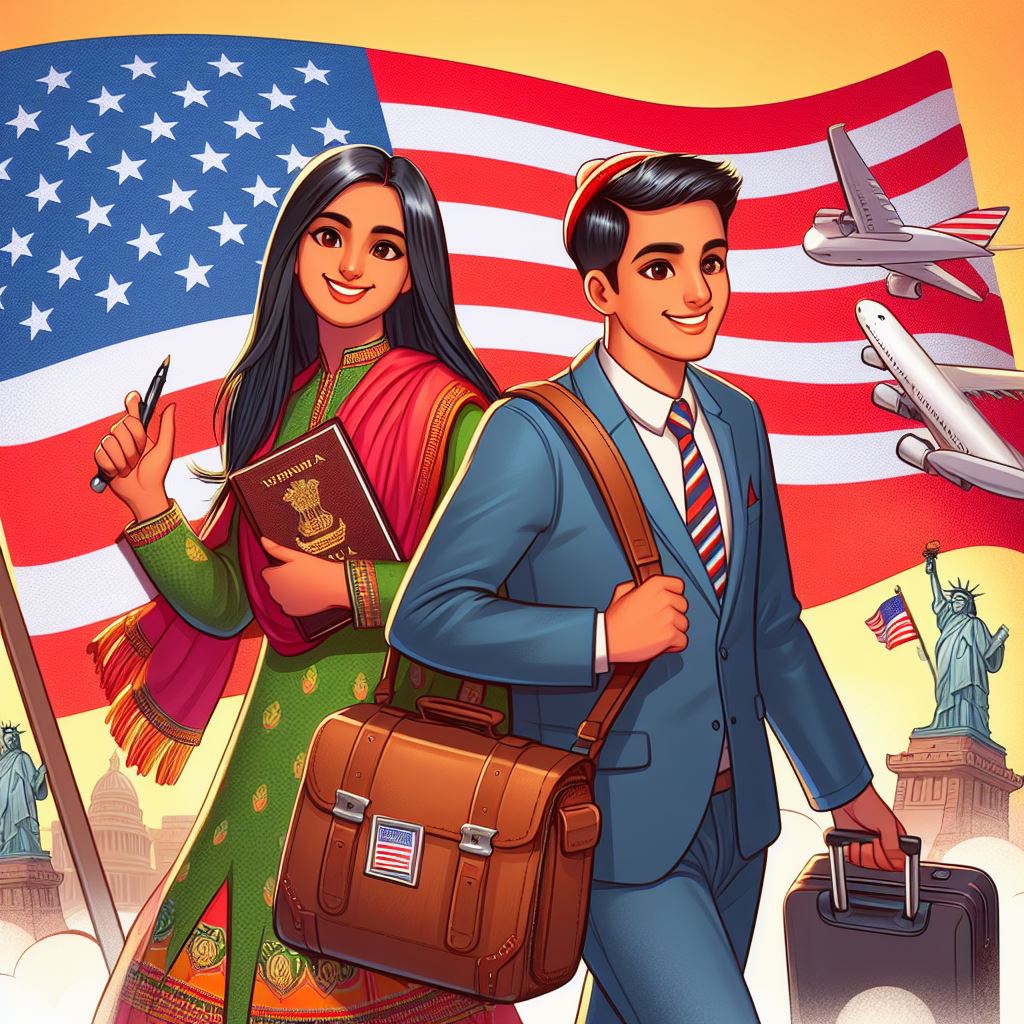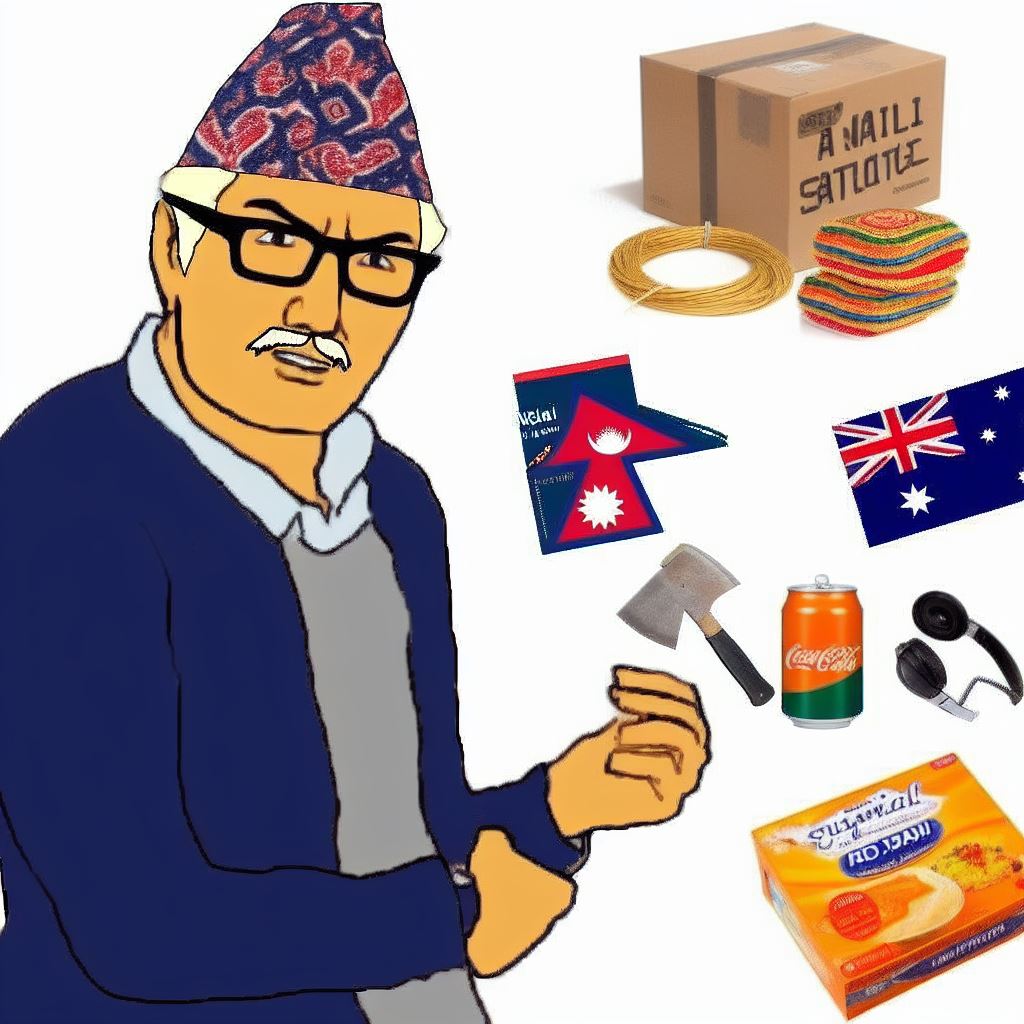When the thrill of studying in the United States beckons, understanding the visa labyrinth shouldn’t be a daunting task. Let’s demystify the process for Indian citizens seeking to venture into the realms of American education. The route to a U.S. student visa is a well-trodden path, albeit one that demands precision and timeliness in execution.
The U.S. Department of State and its Embassy offices embrace international students’ visa applications with open arms. In a fiscal year, over 715,000 visas were granted, boasting an acceptance rate of over 86% worldwide. But how do you navigate this journey?
Visa Types: Unveiling Your Options
Two primary visas pave the way for U.S. study: the F-1 Student Visa and the J-1 Exchange Visitor Visa. But here’s the catch: you don’t have to play the guessing game. Your university or sponsoring organization will chart your visa course based on your pursuit.
- F-1 Student Visa: This is the golden ticket for most full-time students enrolled in U.S. government-recognized educational institutions. Spouses or children joining F-1 visa holders will traverse on an F-2 visa. Note, however, that F-2 spouses don’t have work rights but can explore their own U.S. visa path for work or study.
- J-1 Exchange Visitor Visa: For those embarking on exchange programs, whether students, scholars, or visiting lecturers, the J-1 Visa is the passport to this journey. Think Fulbright scholars or Indian university students venturing on short-term study abroad programs. Accompanying spouses or children will tread on a J-2 visa. Here’s the perk: J-2 spouses can obtain work authorization with prior permission.
Remember, this guide is just a stepping stone. For the authoritative scoop on student visas, consult the U.S. Embassy in India. Their word reigns supreme over any information shared here.
Buckle up and prepare to unravel the possibilities! Whether you’re on an F-1 path or charting a course via J-1, your pursuit of U.S. education is an adventure waiting to be seized.
Unlocking the Doors to U.S. Education: Your USA Student Visa Journey Unveiled!
Embarking on a journey to study, research, or engage in an exchange program in the United States is an exciting prospect, and the J-1 Exchange Visitor Visa serves as a gateway to this enriching experience. Here are the top 10 things you should know about the J-1 Visa:
- Diverse Eligibility: The J-1 Visa caters to various individuals, including students, scholars, researchers, and professors participating in exchange programs designated by the U.S. Department of State. This diversity allows for cultural exchange and academic collaboration.
- Sponsorship is Key: Unlike some visas where individuals can apply independently, the J-1 Visa requires sponsorship from an approved Exchange Visitor Program sponsor. Your sponsoring organization or institution will assist with the application process and provide support during your stay.
- Duration and Extensions: The duration of a J-1 Visa varies based on the program. It typically allows for the duration needed to complete the specific program, with the possibility of extensions in certain cases. Be sure to understand the limits and extensions associated with your program.
- Insurance Requirements: Health insurance is mandatory for J-1 Visa holders and any accompanying dependents. This coverage must meet specific requirements outlined by the U.S. Department of State to ensure access to adequate healthcare during your stay.
- Work Authorization: J-1 Visa holders can work under certain conditions and with prior authorization. However, the primary purpose of the J-1 Visa is cultural exchange and educational activities, so any work undertaken must align with the program’s objectives.
- Two-Year Home Residency Requirement: Some J-1 Visa holders may be subject to a requirement to return to their home country for at least two years before being eligible for certain U.S. immigration benefits, such as a change of status or permanent residency. This requirement applies to those in programs funded by the U.S. government or their home country’s government, among others.
- Academic Training Opportunities: The J-1 Visa allows for academic training related to your field of study or program. This practical experience complements your academic pursuits and enhances your skill set.
- Cultural Exchange Responsibilities: As a J-1 Visa holder, you’re expected to actively engage in cultural exchange activities. These can include community service, sharing your culture, or participating in events that foster cross-cultural understanding.
- Dependents’ Eligibility: Spouses and unmarried children under 21 years old can accompany J-1 Visa holders on a J-2 Visa. They may also be eligible to study in the U.S. and, in certain cases, work with proper authorization.
- Maintaining Status: Adhering to the rules and regulations of the J-1 Visa is crucial to maintaining legal status in the U.S. Ensure you understand and comply with reporting requirements, program rules, and any updates or changes to immigration policies.
Navigating the intricacies of the J-1 Exchange Visitor Visa requires careful attention to detail and adherence to the guidelines set forth by the U.S. Department of State. By familiarizing yourself with these key aspects, you can make the most of your educational and cultural experience in the United States.
Here’s an expanded and more detailed breakdown of the steps involved in applying for an F-1 or J-1 Visa:
1. Research and Information Gathering
- Explore U.S. Embassy Information: Begin by thoroughly reading and understanding the information provided by the U.S. Embassy regarding F-1 Student Visas and J-1 Exchange Visitor Visas. Familiarize yourself with the requirements and procedures.
2. Financial Preparation
- Proof of Funds: Upon acceptance to a U.S. educational institution or program, the university or sponsor will request proof of financial support for your first year of study. This includes bank statements, scholarship offer letters, or loan documentation to cover tuition, living expenses, and any dependents accompanying you.
3. Certificate of Eligibility
- Receipt of I-20 or DS-2019: After proving financial capability, your university or sponsor will issue the relevant certificate of eligibility: the I-20 for F-1 Visa or DS-2019 for J-1 Visa. If you plan to bring dependents, the same form will be utilized for their visas.
4. SEVIS Registration
- SEVIS I-901 Form: Upon receiving the I-20 or DS-2019, you must complete the SEVIS I-901 form to register with the Student and Exchange Visitor Information System (SEVIS). Pay the required SEVIS fee online, which differs for F-1 ($350) and J-1 ($220) visas. Dependents on F-2 or J-2 visas are exempt from this fee.
5. Visa Interview Appointment
- Schedule Visa Interview: Book an appointment for a visa interview at the U.S. Embassy or Consulate within your jurisdiction. Follow the specific procedures for your location, such as paying the visa fee and scheduling appointments as required.
6. DS-160 Visa Application
- Complete DS-160 Form: Fill out the DS-160 visa application form online. This form must be completed accurately, providing details about your educational background, personal information, and criminal history (if any). Upload a suitable digital passport photo and save the form regularly to prevent timing out.
7. Preparing for the Interview
- Gather Supporting Documentation: Compile essential documents, including your university acceptance letter, financial statements, and any other relevant paperwork. Prepare to articulate your academic intentions, financial capabilities, and reasons for choosing the particular institution and program.
8. Visa Interview Preparation
- Demonstrate Intent and Plans: Visa officers will assess your genuine intent for studying in the U.S., your financial preparedness for the entire duration of the program, and your alignment with the non-immigrant intent of the visa.
9. Attend the Visa Interview
- Present Your Case: Attend the scheduled visa interview and present your case confidently. Be ready to discuss your educational plans, reasons for choosing the U.S., long-term goals, and intentions to return to your home country after completion of studies.
Following these steps diligently and being well-prepared for each stage of the application process will increase the likelihood of a successful visa application for studying or participating in an exchange program in the United States.
Bonus Details About Acing the Visa Interview for Studying Abroad in USA
Prospective visa applicants need to demonstrate to immigration officers that they don’t intend to overstay their visas. This requires showing strong ties to their home country, such as personal, cultural, or professional connections to India.
Before the appointment, carefully review the U.S. Embassy’s security information and plan the journey to the Embassy. Gather essential documents like your passport, appointment letter, I-20/DS-2019, MRV receipt, DS-160, photo, and SEVIS receipt. Watch the Embassy’s instructional video to understand the arrival procedures and security measures at the Embassy.
Upon arrival, expect security procedures akin to an airport. Electronics are prohibited, so carry minimal belongings and be prepared to wait. Your visit will involve an initial intake process where you submit your application, passport, photo, and provide fingerprints. Incorrectly filled DS-160 forms may lead to rescheduling the appointment.
Following this, await your turn for the actual visa interview. Though the interview itself might be brief, the entire Embassy visit may take several hours. Your passport will stay with the Embassy post-interview. Visa processing typically takes 5-7 working days.
Upon receiving the visa, plan your travel to the U.S. based on visa stipulations. F-1 visa holders can enter 30 days before the I-20 start date and stay up to 60 days after program completion. J-1 visa holders can enter 30 days before the DS-2019 start date but can only stay 30 days after program completion.
In case of visa refusal, refer to the Embassy’s website for details on visa refusal information. Before departure, review the ‘tips before going to the U.S.’ section on the Embassy’s website to ensure a smooth transition.
Spouses and Dependent children in F-1 and J-1 Visas
Spouses and children under 21 years old have the opportunity to accompany F-1 and J-1 visa holders by applying for F-2 and J-2 visas, respectively. This presents a chance to share the international experience, but it also involves careful planning for both logistical and financial aspects. Visa holders must demonstrate they can financially support their dependents throughout their stay.
While bringing spouses and children can enhance the experience, it’s essential to understand the limitations. For instance, F-2 visa holders, including spouses, are restricted from engaging in any form of paid work within the U.S. This means they cannot seek employment unless they independently apply for their own work or study visa.
Additionally, the financial responsibility for supporting dependents falls on the visa holder. This obligation includes covering living expenses, healthcare, education, and other necessary costs for the accompanying family members. It’s crucial to plan and budget accordingly to ensure the well-being of the dependents throughout their stay in the U.S.



